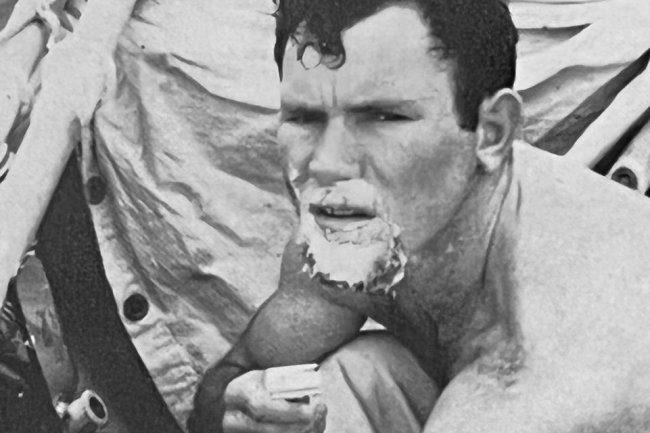‘The Bathysphere Book’ Review: The Descent of William Beebe
Nearly a century before the Titan implosion, the American naturalist traveled half a mile under the sea in a steel orb. Otis Barton and William Beebe with the bathysphere in 1934. Photo: Alamy Stock Photo By Benjamin Shull July 2, 2023 3:43 pm ET On June 11, 1930, the American naturalist William Beebe descended into the waters off Nonsuch Island in Bermuda. He was seated in the bathysphere, a submersible steel ball equipped with oxygen tanks and small quartz windows, alongside the device’s inventor, Otis Barton. As the bathysphere sank lower, Beebe relayed his scientific observations via telephone cable to Gloria Hollister, a marine biologist on board the surface vessel to which the bathysphere was tethered. Hollister recorded Beebe’s impressions of the waters around him as well as of t


Otis Barton and William Beebe with the bathysphere in 1934.
Photo: Alamy Stock Photo
On June 11, 1930, the American naturalist William Beebe descended into the waters off Nonsuch Island in Bermuda. He was seated in the bathysphere, a submersible steel ball equipped with oxygen tanks and small quartz windows, alongside the device’s inventor, Otis Barton.
As the bathysphere sank lower, Beebe relayed his scientific observations via telephone cable to Gloria Hollister, a marine biologist on board the surface vessel to which the bathysphere was tethered. Hollister recorded Beebe’s impressions of the waters around him as well as of the strange life forms he saw, including, at 1,400 feet, a sharp-toothed, bioluminescent eel that seemed like “a slipped gear in the grind of reality.” Beebe, amazed by the sight, had been “thrust briefly into a nightmare of fluorescent tearing and gnashing.”
Beebe, Barton and Hollister conducted a series of bathysphere dives off the coast of Nonsuch from 1930 to 1934. These deep-sea sorties, among the first of their kind, provide the starting point for Brad Fox’s “The Bathysphere Book,” which surveys a pioneer period of ocean exploration—and much else besides. Mr. Fox, a writer based in New York, describes the luminous darkness encountered by Beebe in the bathysphere, and uses the naturalist’s experience of the depths to anchor his life story. It’s an unorthodox way to structure a book, but in Mr. Fox’s sure hands it works wonderfully.

Illustration by Else Bostelmann.
Photo: Wildlife Conservation Society
Beebe (1877-1962) recounted his time in the bathysphere in his 1934 book “Half Mile Down.” He was born in Brooklyn; a phrenologist convinced him at a young age that he’d never be an intellectual because his head was too small. In 1910 he and his wife, Mary Blair Rice, set off on a world-wide expedition in search of pheasants. Beebe’s research and publications had already caught the eye of fellow outdoorsman Theodore Roosevelt, who encouraged his work.
He later went to the Galápagos Islands, where, on Easter 1925, he witnessed volcanic activity. As Mr. Fox writes: “Smoke gushed from a hundred holes and eventually masses of glowing lava broke through the mountain ridges. As the sun disappeared over the horizon the entire sky grew pink, then dimmed into ‘fiery gorgeousness.’ The clouds above them were the deep, felty scarlet of certain roses.”
In his account of Beebe’s career, which also included multiple sojourns in Guyana, Mr. Fox riffs in many surprising directions. His report on Beebe’s time in the Galápagos, for instance, leads to a profile of the explorer William Dampier, who had visited the islands a century and a half before Charles Darwin arrived in 1835. Dampier would later rescue the marooned Scotsman Alexander Selkirk, the likely inspiration for Daniel Defoe’s 1719 novel “Robinson Crusoe,” from an uninhabited island off the coast of Chile.
Examining Beebe’s encounters with luminous deep-sea creatures, Mr. Fox points to a 16th-century divine named Stephen Batman, who described the glowworm as a beast that “shineth in darkness as a candle, and is foule and darke in full light.” Batman believed such glowings were the work of the devil and denounced them in his book “The Doome Warning All Men to Judgment.”
In Bermuda, Barton, who had perfected the bathysphere in the late 1920s, insisted he join Beebe down below. Mr. Fox reproduces Hollister’s transcriptions of Beebe’s vividly phrased impressions. During the June 11, 1930, dive, at 1,050 feet, Beebe’s surroundings are “blacker than blackest midnight yet brilliant.” During other dives he sees a “six-foot Shark quite near,” a “silvery brown Squid,” and a “big shrimp shooting out luminous material which looks like a veil.” Reading these observations sequentially, studying the accompanying color illustrations, and turning the book’s heavy, glossy pages is an immersive aesthetic experience.
On Aug. 15, 1934, Beebe and Barton descended to over 3,000 feet. At 1,800 feet, Beebe notices a “fish with nothing but teeth illumined, mouth 1 inch across, does not close completely.” At 2,200: “Have never seen such a dark place, it is the darkest in the world.” At 2,800: “Here’s a telescope-eyed fish, it’s Argyropelecus, and its eyes are very distinct.”
Mr. Fox describes the siphonophore, which Beebe encountered frequently on his dives. As the author explains, the siphonophore—which looks like a long, swimming, gelatinous ribbon—is not a single organism but a colony of smaller creatures, “an undersea metropolis whose citizens cooperate closely to keep the bustling society harmoniously alive.” The small bodies share a circulatory system but not a central brain. Such strange configurations of life fired Beebe’s imagination and led him to ponder the affairs of humans above the surface, the follies of his own species compared to the Atlantis below.
The end of the Bermuda expedition in 1934 spelled the effective retirement of the bathysphere. Mr. Fox narrates the remainder of Beebe’s life, including the time he spent in the Venezuelan highlands and Trinidad. Beebe’s “Half Mile Down,” Mr. Fox points out, was dedicated to Madison Grant, who introduced Beebe to Roosevelt and co-founded the New York Zoological Society, which underwrote Beebe’s expeditions. Grant was a eugenics advocate and the author of “The Passing of the Great Race” (1916). The president of the American Natural History Museum wrote the book’s preface, and it was endorsed by Roosevelt. Hitler called it his “Bible.”
Mr. Fox is clear-eyed about Grant and his ilk. They were “not simply men of their time,” he says: Beebe’s eugenicist friends and sponsors “represented a side in an ongoing debate with a body count.” More compelling than Grant’s odious race science are Beebe’s musings on the ocean depths, which Mr. Fox renders in lyrical and wry prose. Humans have since traveled further, including in 1960, when Don Walsh and Jacques Piccard descended to the bottom of the Mariana Trench, the ocean’s deepest point. The filmmaker James Cameron made that journey solo a decade ago.
The fatal implosion of the Titan submersible is a reminder that, for all its beauty, the ocean can be an unforgiving place, one that should be explored with humility. William Beebe held the primordial waters in awe. His reflections from a half-mile down suffuse one of the most fascinating and unusual new books I’ve read in some time.
Mr. Shull is a books editor at the Journal.
What's Your Reaction?













